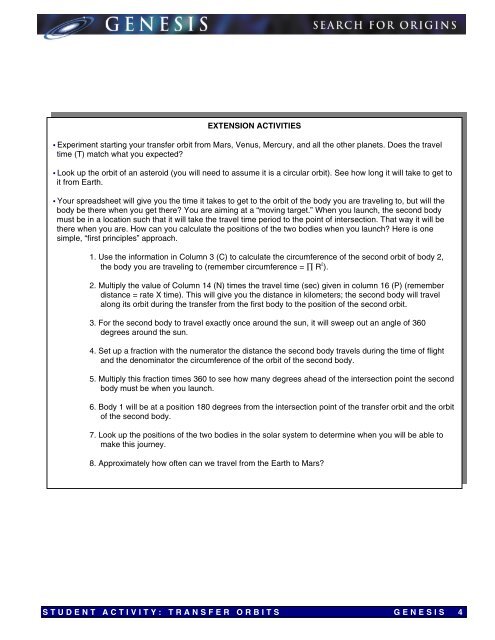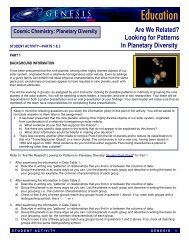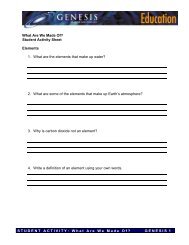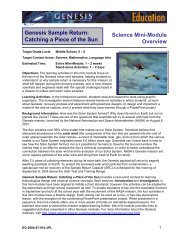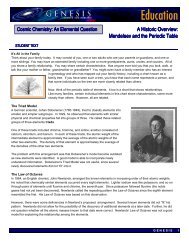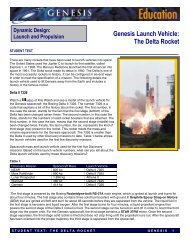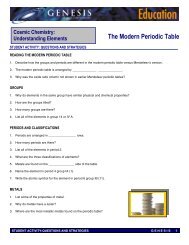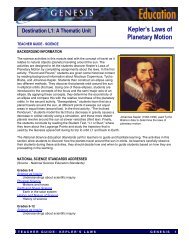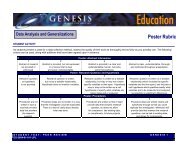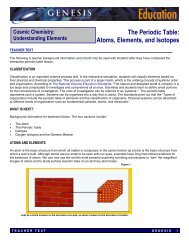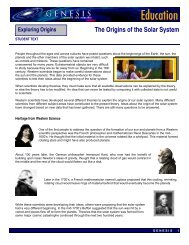A Thematic Unit Minimum Energy Transfer Orbits - Genesis
A Thematic Unit Minimum Energy Transfer Orbits - Genesis
A Thematic Unit Minimum Energy Transfer Orbits - Genesis
You also want an ePaper? Increase the reach of your titles
YUMPU automatically turns print PDFs into web optimized ePapers that Google loves.
EXTENSION ACTIVITIES<br />
• Experiment starting your transfer orbit from Mars, Venus, Mercury, and all the other planets. Does the travel<br />
time (T) match what you expected?<br />
• Look up the orbit of an asteroid (you will need to assume it is a circular orbit). See how long it w ill take to get to<br />
it from Earth.<br />
• Your spreadsheet will give you the time it takes to get to the orbit of the body you are traveling to, but will the<br />
body be there when you get there? You are aiming at a “moving target.” When you launch, the second body<br />
must be in a location such that it w ill take the travel time period to the point of intersection. That way it will be<br />
there when you are. How can you calculate the positions of the two bodies when you launch? Here is one<br />
simple, “first principles” approach.<br />
i i<br />
li i ∏ R 2 1. Use the information in Column 3 (C) to calculate the c rcumference of the second orb t of body 2,<br />
the body you are trave ng to (remember c rcumference = ).<br />
2. Multiply the value of Column 14 (N) times the trave l time (sec) given in column 16 (P) (remember<br />
distance = rate X time). This will give you the distance in kilometers; the second body will travel<br />
along its orbit during the transfer from the first body to the position of the second orbit.<br />
3. For the second body to travel exactly once around the sun, it w ill sweep out an angle of 360<br />
degrees around the sun.<br />
4. Set up a fraction with the numerator the distance the second body travels during the time of flight<br />
and the denominator the circumference of the orbit of the second body.<br />
5. Multiply this fraction times 360 to see how many degrees ahead of the intersection point the second<br />
body must be when you launch.<br />
6. Body 1 w ill be at a position 180 degrees from the intersection point of the transfer orbit and the orbit<br />
of the second body.<br />
7. Look up the positions of the two bodies in the solar system to determine when you w ill be able to<br />
make this journey.<br />
8. Approximately how often can we travel from the Earth to Mars?<br />
STUDENT ACTIVITY: TRANSFER ORBITS GENESIS<br />
4


